#J.R.R. Tolkien fan merchandise
Explore tagged Tumblr posts
Text

Not All Those Who Wander Are Lost T-Shirt
"Not All Those Who Wander Are Lost" is a stylish and inspirational T-shirt featuring a famous quote by J.R.R. Tolkien. The shirt is perfect for people who love to travel, explore new places, and embrace the journey rather than just the destination. This shirt is not only comfortable and fashionable but also carries a powerful message that encourages you to live life to the fullest.
#Not All Those Who Wander Are Lost T-Shirt#Wanderlust tee#Adventure shirt#Inspirational quote t-shirt#Travel clothing#Hiking apparel#Motivational tee#Outdoor enthusiast shirt#Bohemian fashion#J.R.R. Tolkien fan merchandise#Nature lover tee.
0 notes
Text




National Winnie the Pooh Day
Grab a pot of “hunny”, enjoy a game of Poohsticks and revisit these beloved childhood stories about a bear and all his friends
One of the cuddliest holidays around has to be National Winnie the Pooh Day, celebrated on the birthday of author A. A. Milne. It’s one special anniversary fans just can’t bear to miss! Every year, the occasion is marked with events such as teddy bears’ picnics, featuring plenty of honey on the menu.
History Of Winnie The Pooh Day
Winnie the Pooh first appeared on the printed page in 1926, together with friends Piglet, Tigger, and Eeyore. All of them were based on toys owned by the author’s son, who also featured in the famous stories as Christopher Robin. The character later starred in a series of much-loved Disney films.
The name Winnie, for instance, came from Milne’s teddy bear Winnie. The “Pooh” part was from the nickname of a swan he’d met on holiday. The rest of the names, besides those mentioned above, were purely creations of his mind and allegedly did not refer to any objects in the real world.
The story and adventures of Winnie the Pooh are set in the ancient Ashdown Forest of East Sussex. The area features beautiful open heathland, wooded areas, and high ridges. Locals consider it an area of outstanding natural beauty.
Many stories in Winnie the Pooh have clear associations with locations in the forest. The illustrations that accompanied the original books often depicted scenes from this part of the world. Pooh, Tigger, and the crew are regularly seen marching through beautiful gorse, heather, bracken, and silver birch, all popular in the Ashdown area.
The landscapes were an essential part of what helped to make Winnie the Pooh such a compelling pop phenomenon. Like J.R.R Tolkien, Milne had found something unique and persuasive in the English countryside. There was deep magic about it that lent itself to pure escapism. The idea of friendly animal characters adventuring in such an area whisked audiences off to another world that had nothing to do with the pressures of the modern economy.
The first-ever Pooh stories appeared in a Christmas special edition of the Evening Standard newspaper in December 1924. The first book Winnie-the-Pooh emerged around a year later. It told the very first stories of Pooh and his compatriots as they humorously toured through idyllic country scenes, collecting honey and arguing pleasantly.
The Winnie the Pooh brand remained in the Milne family until 1930 until television and merchandising expert, Stephen Slesinger, bought out the rights. Milne received a $1,000 payment upfront plus 66 percent of the income generated by Slesinger’s efforts. Over the next thirty years, Winnie-the-Pooh transformed into a $50 million-a-year franchise – a testament to its tremendous popularity.
Pooh ceased being solely a storybook character. He soon grew into a film star, musician, and toy brand. No longer was the concept confined to the pages of a book. Winnie-the-Pooh had a very real presence in the world.
Throughout it all, though, Slesinger and the Milne family remained faithful to the original character of Winnie-the-Pooh. At first blush, everyone’s favorite yellow bear seems a little slow and dim-witted. But as the stories develop, you soon see endearing aspects of his character and profound emotional intelligence.
Pooh is keenly aware of his intellectual limitations, but this is an aspect that makes him so lovable. There’s no pretense about the bear. He just wants to live his life and find practical, hands-on solutions to problems. Examples of his down-to-Earth nature abound from his rescuing of Eeyore from a river to Poohsticks’ invention.
Pooh is also extremely fond of food and not afraid to indulge a little in life’s pleasures. He loves what he calls “hunny” and will go to great lengths to acquire it.
Most of the time, Pooh hangs out with his friends. He is a social creature, always interested in the lives of others. He makes a habit of spending time with the other animals of the forest and ensures that their needs are met. He is a kind of steward and a leader, without people realizing it.
When Disney bought the rights to the franchise in 1966, they were keen to keep Pooh’s lovable persona intact. Bosses at the studio knew that it was a winning formula and something people instinctively loved. Pooh hit the big time, thanks to animated productions from the cartoon maker.
The first production in 1966 was a theatrical “featurette” called Winnie the Pooh and the Honey Tree. Later, Disney followed up these productions with Winnie the Pooh and the Blustery Day and Winnie the Pooh and Tigger Too in 1974.
Seeing the demand for a feature-length film, the studio combined all three into The Many Adventures of Winnie the Pooh.
Things kicked off for the franchise after 1980. Producers gave the go-ahead for a series of new movies and television series that exposed entire generations of children to the concept. The first of these was Welcome to Pooh Corner, which ran from 1983 to 1986. After that came The New Adventures of Winnie the Pooh and My Friends Tigger & Pooh.
Ultimate, Milne intended Winnie the Pooh as a work that would comfort, not challenge. And that remains very much the essence of the franchise to this day.
How to Celebrate Winnie The Pooh Day
Thanks to the sheer number of films, books, and TV adaptations, there are all kinds of ways you can enjoy National Winnie the Pooh Day. In fact, there’s so much content to consume, there’s no way you’ll get it all done in twenty-four hours. Oh well, there’s always next year!
If you’re the sort of person who loves the history of Winnie the Pooh, why not spend the day reading Milne’s original works, starting with the Christmas edition of the 1924 Evening Standard? Then move on to reading the compilation stories to get a sense of how the author originally envisioned the character.
After that, it might be fun to move on to later adaptations of Pooh to see how he evolved over time. Often, you’ll find striking consistency, and sometimes you’ll find small cultural context changes here and there. Overall, though, it is incredible how similar the modern incarnation is to his historical counterpart.
Indulging in a Winnie the Pooh movie marathon can also be a lot of fun. You could watch all the films from the 1970s until the present, back to back.
Winnie the Pooh was also a massive lover of food, especially honey. Nothing is stopping you from recreating his favorite recipes from the books and movies.
Finally, one extra-special way to mark the day is to visit Pooh Corner in Hartfield, East Sussex, where the books were written. You can pick up a map to follow in the characters’ footsteps, and even play a game of Poohsticks on the original bridge.
Celebrating National Winnie the Pooh Day, therefore, is way easier than you might think. Dressing up as a bear, eating lots of honey, and watching your favorite Pooh movies are all great options.
Source
#National Winnie the Pooh Day#WinnieThePoohDay#18 January#White River#Ontario#Winnie-the-Pooh#Winnie's hometown#Canada#travel#outdoors#landmark#original photography#summer 2012#sculpture#it ain't Disney's Winnie#A.A. Milne#born#18 January 1882#NationalWinniethePoohDay#roadside attraction#tourist attraction#children's book#author#writer#vacation#birthday#anniversary#culture#cityscape
4 notes
·
View notes
Text
The Ultimate Guide to Lord of the Rings Gifts and Maps
For fans of J.R.R. Tolkien's epic saga, The Lord of the Rings, there’s nothing quite like owning a piece of Middle-earth. Whether you're looking for thoughtful gifts or captivating maps of this mythical world, the possibilities are endless. This guide explores unique Lord of the Rings gifts and the allure of detailed Lord of the Rings maps, perfect for die-hard fans and casual admirers alike.
Why Lord of the Rings Gifts Make Perfect Presents
When considering a gift for a Tolkien fan, themed merchandise has unmatched appeal. Here's why these gifts are so special:
Personal Connection to Middle-earth
Themed gifts allow fans to feel closer to the iconic world of Middle-earth. Whether it’s a replica of the One Ring or a collectible sword, these items evoke cherished memories of the trilogy.
Types of Popular Lord of the Rings Gifts
Jewelry: The One Ring is perhaps the most sought-after gift. Available in various materials, including gold-plated and engraved versions, it’s a timeless keepsake.
Collectibles: From action figures to statues of Gandalf or Frodo, collectibles are a great way to honor iconic characters.
Clothing and Accessories: Hoodies, T-shirts, and scarves adorned with quotes or symbols from the series make stylish and cozy gifts.
Board Games and Puzzles: Immersive board games inspired by Middle-earth adventures are perfect for interactive fun.
Books and Box Sets: Special edition books or box sets of The Hobbit and The Lord of the Rings trilogy remain a classic choice.
Lord of the Rings Maps: A Gateway to Middle-earth
For fans captivated by Tolkien’s intricate world-building, Lord of the Rings maps offer a window into the geography and history of Middle-earth.
The Significance of Maps in Tolkien’s Works
Maps play an integral role in The Lord of the Rings. They provide context for the characters’ journeys, from Frodo’s trek through Mordor to Aragorn’s pursuit of his destiny.
Types of Lord of the Rings Maps
The Original Middle-earth Map: This map, depicting key locations like Rivendell, Mordor, and the Shire, is a favorite among enthusiasts.
The Map of Beleriand: A deeper dive into Tolkien’s universe, this map explores the lands from The Silmarillion, adding layers to the world.
Custom Artistic Maps: Hand-drawn or watercolor versions of Middle-earth maps add a decorative touch to any fan’s collection.
Interactive Digital Maps: Modern digital versions let fans explore Middle-earth interactively, complete with detailed annotations and descriptions.
How to Choose the Perfect Gift or Map
Finding the right Lord of the Rings gift or map requires thought and creativity. Here are some tips:
Consider the Recipient’s Interests
Collectors: Opt for exclusive or limited-edition items, like statues or autographed memorabilia.
Adventurers: Maps or travel-themed items like compasses and journals inspired by Middle-earth are ideal.
Focus on Quality
When choosing a map, ensure it’s well-crafted. Look for high-quality prints or artistically designed pieces that stand out as decorative items.
Practicality vs. Sentimentality
Some fans prefer practical gifts like mugs or T-shirts, while others value deeply sentimental keepsakes, like framed maps or hand-bound journals.
Where to Find Lord of the Rings Gifts and Maps
Online Marketplaces: Platforms like Etsy and Amazon offer a vast selection of handmade and custom-designed gifts.
Official Merchandise Stores: Websites dedicated to Tolkien merchandise provide authentic and licensed products.
Local Bookstores and Gift Shops: Many bookstores stock maps and unique Tolkien-inspired items, making them great places to shop.
Conclusion
The magic of The Lord of the Rings continues to inspire generations, making gifts and maps from Middle-earth more popular than ever. Whether you’re selecting a map that charts the epic journeys of Frodo and Sam or a unique gift to honor a Tolkien enthusiast, the options are boundless. By choosing the perfect Lord of the Rings gift or map, you’re not just offering a present—you’re delivering a piece of the enchanting world of Middle-earth.
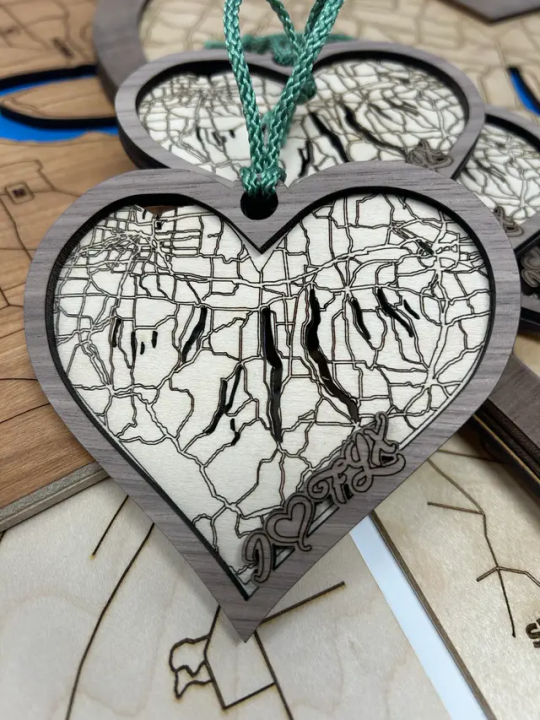
2 notes
·
View notes
Text
For Fans of the One Ring: Iconic Lord of the Rings Merchandise You Need!!
If you’ve ever found yourself captivated by the epic journeys of Frodo Baggins, the wisdom of Gandalf, or the nobility of Aragorn, then The Lord of the Rings has likely carved a special place in your heart. Whether it’s the enchanting landscapes of Middle-earth or the battle between good and evil, J.R.R. Tolkien's timeless tale continues to inspire fans across the globe. But for the true fan, simply watching the movies or reading the books isn't enough — you want a piece of Middle-earth with you, something tangible to commemorate your passion for this legendary saga. That’s where The Lord of the Rings merchandise comes in, and we’re here to help you curate the perfect collection! From collectible action figures to iconic replicas, here's a guide to the Lord of the Rings merchandise you absolutely need to bring the magic of Middle-earth into your everyday life.
The One Ring Replica : No Lord of the Rings collection is complete without the most powerful artifact in Middle-earth — the One Ring itself. Whether you're after an authentic gold-plated version or a more affordable replica, having the One Ring is a must-have for any fan. Many replicas come with an inscription in Elvish script, making them an exceptional display piece or an iconic accessory to wear. With this precious piece in hand, you’ll feel just a bit closer to the magic of Sauron’s dark powers — without the whole evil side effect, of course.
Whether you're a longtime fan or a newcomer to the world of The Lord of the Rings, collecting merchandise is an exciting way to celebrate this legendary series. From action figures and weapon replicas to jewelry and artwork, the possibilities are endless. Not only do these items allow you to relive the adventures of Frodo and the Fellowship, but they also let you bring the enchantment and magic of Middle-earth into your own home. At NerdArena, we offer an extensive range of Lord of the Rings merchandise, ensuring that fans can find exactly what they’re looking for. Whether you’re starting your collection or adding to it, NerdArena is the perfect destination for fans of the One Ring. Explore our collection today and bring the magic of Middle-earth to life!
Prime Characters Of Lord Of The Rings:
Below are some of the prime characters action figures of the lord of the rings series of you should not miss keeping on your shelf:
Aragon :
Add the iconic Aragorn Funko Pop! from The Lord of the Rings to your collection. Perfectly capturing the rugged, noble features of the Ranger turned King, this figure is a must-have for any fan of the beloved fantasy series. Whether you're a long-time collector or just starting, this Funko Pop! brings a piece of Middle-earth into your home with charm and detail that every fan will appreciate. If you are a true lord of the rings fan and you wish to purchase these anime figurines then you can find them at action figures online india.
Frodo Baggins :
Bring the courage of Frodo Baggins into your collection with this limited edition 1/10 scale statue from Iron Studios' Battle Diorama Series. Capturing Frodo in a pivotal moment from The Lord of the Rings, this artfully crafted statue showcases intricate detailing, from his iconic Elven cloak to the One Ring in hand. A must-have for true fans of Middle-earth, this collectible is a stunning tribute to the journey of the brave hobbit who carried the fate of the world. Add this masterpiece to your collection and relive the magic of the epic saga! If you are a true lord of the rings fan and you wish to purchase these anime figurines then you can find them at action figures online india.
Samwise Gamgee :
Celebrate the heart and bravery of Samwise Gamgee with this limited edition 1/10 scale statue from Iron Studios' Battle Diorama Series. Expertly crafted with stunning detail, this collectible captures Sam in a heroic pose, complete with his Elven cloak and sword, as he stands ready to defend his friends on the journey through Middle-earth. A perfect addition for fans of The Lord of the Rings, this statue honors the unsung hero whose loyalty and courage helped save the world. Bring Sam’s unwavering spirit to your collection today! If you are a true lord of the rings fan and you wish to purchase these anime figurines then you can find them at action figures online india.
Apart from the above marvel figuirines, dc action figures or dc superhero merchandies, there are many other action figures you can explore. If you are looking out for such action figures then Nerd Arena is a one-stop solution for such kinds of action figures.
To Know More https://nerdarena.in/blogs/artists-corner/for-fans-of-the-one-ring-iconic-lord-of-the-rings-merchandise-you-need

1 note
·
View note
Text
Lord Of The Rings Middle Earth Is Annual Mordor Fun Run Ugly Sweater Christmas Party
The Lord of the Rings Middle Earth Is Annual – Mordor Fun Run Ugly Sweater Christmas Party is an exciting event that captures the essence of the beloved fantasy world created by J.R.R. Tolkien. This event provides an opportunity for fans of all ages, genders, and backgrounds to come together and celebrate their shared love for Middle Earth. The Mordor Fun Run Ugly Sweater Christmas Party is a unique combination of two popular concepts: a fun run and an ugly sweater party. Participants are encouraged to dress up in their ugliest, most outrageous Middle Earth-themed ugly sweaters and join in a leisurely run through a scenic route inspired by the landscapes of Middle Earth. It is a chance to showcase creativity and demonstrate a true passion for the mythical world of hobbits, elves, wizards, and the One Ring. The event is not only for avid runners or fitness enthusiasts but also for anyone who appreciates the charm and whimsy of Middle Earth. Participants can choose to run, walk, or even skip along the route, making it accessible and enjoyable for individuals of varying levels of athletic ability. The atmosphere is vibrant and inclusive, as participants cheer each other on and share their enthusiasm for the Lord of the Rings universe. One of the highlights of the Mordor Fun Run Ugly Sweater Christmas Party is the sense of community it fosters. Fans from all over gather to connect with like-minded individuals who share their passion for this iconic series. It is an opportunity to meet new people, forge new friendships, and engage in lively discussions about Middle Earth lore. The event is an embodiment of the magical bonds that the Lord of the Rings has created between fans worldwide. Additionally, the Mordor Fun Run Ugly Sweater Christmas Party is a perfect occasion to find unique gifts for the Lord of the Rings enthusiasts in your life. The event offers a variety of merchandise and memorabilia, ranging from collectible figurines to handcrafted jewelry, ensuring that there is something for everyone. Whether it’s a replica of the One Ring itself or a cozy Elven-inspired sweater, the event provides an array of options that are sure to bring joy to any fan. In conclusion, the Lord of the Rings Middle Earth Is Annual – Mordor Fun Run Ugly Sweater Christmas Party is an exceptional event that brings together fans of all ages and backgrounds to celebrate their collective love for Middle Earth. With its combination of a fun run and an ugly sweater party, it offers a unique and enjoyable experience for participants, whether they are avid runners or simply fans of the series. This event fosters a sense of community, provides opportunities for new connections, and offers a diverse range of merchandise that is sure to delight any Lord of the Rings fan.
Get it here : Lord Of The Rings Middle Earth Is Annual – Mordor Fun Run Ugly Sweater Christmas Party
Home Page : tshirtslowprice.com

1 note
·
View note
Text
Zwei Tage voller Harry Potter-Magie - ein Filmmarathon zum 25. Jubiläum
2023 wird ein großes Jubiläum gefeiert: 25 Jahre ist die Erstveröffentlichung eines richtungsweisenden Kinderbuches in Deutschland her: Harry Potter und der Stein der Weisen (Harry Potter and the Philosopher’s Stone) ist der Titel des Erstlings der bei ihrer Debütveröffentlichung 1997 noch unbekannten britischen Autorin Joanne Rowling, welche sich auf Empfehlung des Verlegers einen zweiten Vornamen zulegte und ihren Vornamen auf J. verkürzte, um die Tatsache zu verschleiern, dass sie eine Frau ist. Der britische Mutterverlag Bloomsbury Publishing nimmt nach einigen Ablehnungsschreiben im Sommer 1997 das Risiko auf sich den Roman zu veröffentlichen und darf sich daher heute nach sieben weltweiten Bestsellern in zehn Jahren visionär nennen. 2007 erscheint der letzte Band, dessen Adaption 2011 auch die achtteilige Filmreihe beendet. Das Buch bzw. seine Veröffentlichung stellte einen Rekord als am schnellsten ausverkauftes Buch aller Zeiten auf. Es herrschten Zustände wie heute bei manchen limitierten Verkäufen von neuen Sneakers in besonderer Ausführung inklusive der langen Schlangen und Übernachtungstätern vor den Läden. Im Laufe der Zeit ist das kleine Kinderbuch zum Zentrum eines ganzen Universum herangewachsen, dessen Fan-Gemeinde mit jedem Jahr größer wird und mit dafür gesorgt hat, dass die Fantasy-Literatur nach den klassischen Werken von C. S. Lewis und J.R.R. Tolkien wieder in den Mittelpunkt der populären Literaturwelt geschoben wurde. An Rowlings Niveau (sowie ihren Erfolg) konnten nur wenige heranreichen und der Markt wird bis heute geflutet von bedeutend schlechter abgeschriebenen und einfallslosen Fantasybüchern, die fast nie einbändig auftreten und als Variationen der gleichen Motivpalette zu gelten haben. Auch J. K. Rowling hat viele Motive und Erzähltechniken von ihren Vorgängern verwertet bis kopiert, sicher die Gattung nicht revolutioniert, aber sie hatte das Glück, das richtige Buch zum richtigen Zeitpunkt zu veröffentlichen und ein äußerst gelungenes Arrangement von Motiven angelegt hat, dessen Dichte und Detailvielfalt einige Leser nie wieder loslassen. Natürlich kam ihrem Erfolg speziell nach dem Beginn der Verfilmungen die perfektionierte Merchandise-Mechanik der Post-Star Wars-Zeit zu Gute, aber die Qualität des Ausgangsprodukts ist auffallend hoch. Zu der breiten Merchandise-Palette gehören neben den Schulbüchern diverse Prachtausgaben der Bücher sowie schön gefertigte (wie auch teure) „Making-of-Bücher“ zu den Filmen und Socken, Tassen, Kleidung, Schreibmaterialien, Bettwäsche, Verkleidungen - eigentlich alles, worauf sich ein Hogwarts-Logo drucken lässt. Und als stolzer Potterhead ist dem eigenen Wohnraum diese Gruppenzugehörigkeit auch anzusehen. Die Bücher und Accessoires dienen dabei auch der Selbstinszenierung und Zuordnung zu einer weiterwachsenden und vielfältigen Gruppe.
Auf Jahre der Verehrung von Rowling als Autorin, Mensch und als Frau folgten seit den 2020ern die Abkehr der Fans und der Hauptdarsteller. Mit ihren Aussagen über Genderfragen hat sie sich selbst ins Abseits bugsiert. Dennoch lässt sich der Ärger über ihre produzierende Beteiligung an der nahenden Serie nicht nachvollziehen. Sie hat das juristische und auch ideelle Recht an ihrer eigenen Schöpfung und jeder Fan sollte froh sein, wenn sie zu große Verdrehungen ihrer Welt verhindert. Dieses Pfand zeichnet die Filme aus, welche trotz dem Drehen vor dem Wissen um den Ausgang der Geschichte einige im Nachgang wichtige Szenen auf ihren Rat hin mit aufnahmen. Das heute die Personalie Rowling problematisch ist und auch die letzten Filmprojekte nicht den erwarteten Erfolg abwarfen verändert nichts am Sonderstatus der Harry Potter-Romane und der die frühen 2000er Jahre prägenden Verfilmungen des Warner Brothers Studios in enger Zusammenarbeit mit der Schöpferin. 2011 mussten die Fans Abschied nehmen, auf den Filmplakaten stand treffenderweise „Es endet alles“. Mit dem zweigeteilten Finale setzte man wieder einen „Trend“ mit unerfreulichen Folgen. Während Rowling, Yates und das gesamte Team damit eine gute Entscheidung trafen und so zumindest einen Bruchteil der Inhalte des dicht mit Informationen gespickten siebten Buches umsetzen konnten, erzwangen einige Produktionen diese Teilung und hatten dabei eigentlich nicht genug zu erzählen. Die Filme bilden natürlich nur einen Auszug aus der Geschichte der Bücher ab und mit jedem ausgelassenen Detail veränderten sich die Gegebenheiten der folgenden Filme, einige Handlungsstränge stellten sich als zuletzt doch relevant heraus während andere Elemente ohne Fortführung bleiben.
Opfer der Kürzungen ist der B(und für) Elfe(n) R(echte) und damit auch die Mehrzahl der Szenen mit dem Publikumsliebling und Freiheitskämpfer Dobby, die Beziehung von Harry zu Cho Chang und auch zu Ginny Weasley wird minimalisiert und ist im 6. Film tatsächlich eine etwas ruckartige Entwicklung, Harrys Patenschaft für Lupins Sohn und seine Bedeutung für die Anerkennung der Vaterrolle durch Lupin bleiben ausgespart, die Geburt des Kindes gar nicht erst thematisiert und auch die Lebensgeschichte von Lord Voldemort wird verkürzt, da die ausführlichen Denkariums-Ausflüge schlicht zu zeitaufwändig zu inszenieren wären. Dies dürfte das Hauptargument für fast alle Kürzungen sein. Dafür nimmt sich Yates die Zeit die „Geschichte der drei Brüder“ von Scherenschnitten illustriert erzählen zu lassen und so die Heiligtümer konzentriert erläutert zu wissen. Er wie auch Rowling beantworten abschließend alle großen Fragen ihrer Reihen, und davon gibt es nach zehn Jahren Lektüre und Filmbetrachtung sehr viele. Die strengsten Leser und Zuschauer sind eingefleischte Fans – dies lässt sich besonders gut am Umgang mit allen Star Wars-Filmen veranschaulichen. Gerade Nerds sind sofort bei großen Debatten über kleinste Details und technische Logikfragen in einer Science-Fiction-Handlung bereit. Auch Magiekonzepte sollten einer Logik folgen, Fehler werden sicher direkt angemahnt. [Unter anderem in diesem Blog in der Kritik an Das verwunschene Kind, wo Rowling ihr Zeitreise-Konzept einfach über den Haufen wirft.]
Harry Potter ist ein gutes Beispiel dafür, wie eine gelungene Literaturadaption sich gerade durch die Abweichungen von der Vorlage emanzipierend auszeichnen kann und diese Vorlage dennoch ausreichend achtet. Jeder Begeisterte der Reihe hat die magische Welt auf seinem eigenen Weg gefunden. Manche über die Bücher, andere über die Filme, wieder andere wohl schon über Geschwister und Eltern. Fakt bleibt das die originale Potter-Generation (also diejenigen, welche das Erscheinen des ersten Bandes miterlebten und noch 2011 den letzten Film im Kino ansahen, also gemeinsam mit Harry Potter, Ron Weasley und Hermine Granger erwachsen geworden sind) das Lesen wieder für sich entdeckten. In Deutschland griffen viele Jugendliche sogar zum englischen Original, um die Wartezeit zu verkürzen. Damit hat Rowling der Welt der Literatur einen wichtigen Dienst erwiesen und sie trat immer wieder als Aktivistin für das Lesen ein. Mit ihren Äußerungen zu Genderfragen hat sie sich als Orientierungsfigur ins Abseits befördert und damit auch die fundierte Position als Aktivistin für das Lesen verloren. Aber dennoch ist ihr viel zu verdanken – zuletzt die Welt um Harry Potter, mit all ihren Details, Figuren und Dialogen. Sie hat damit einen Rückzugsraum für Kinder und Erwachsenen geschaffen, in welchem letztere sich kurz wieder kindlich verhalten und fühlen dürfen. Dieser Effekt ist unbedingt von dem Eskapismusvorwurf zu trennen. Faktisch mag die Wirkung mit diesem Wort treffend beschrieben sein, aber der unterschwellige Vorwurf eines Fluchtversuchs ist nicht mit einer allgemeinen Realitätsflucht oder Ignoranz zu verwechseln. Natürlich liegen diese Formulierungen gefährlich nahe am nostalgischem Kitsch, aber sie entsprechen den Gefühlen die das Hören von John Williams Titelthema „Hedwig’s Theme“ oder die Nennung des Namens Harry Potter bei einem Fan auslöst.
Anlass für diesen voreingenommenen Sermon eines Fans der zweiten Generation, der erst durch einen Schubser der großen Schwester in die Fänge von J. K. Rowling geraten ist, und erst ab Harry Potter und der Halbblutprinz mit voller Energie bei den Neuerscheinungen auf dem Buchmarkt und im Kino dabei war, ist das 25jährige Jubiläum der Buchreihe. Dieses internationale Fest ergänzt den „Harry Potter Book Day“ am 12. Oktober (Bloomsbury Publishing) und den „Back to Hogwarts“-Day (1. September). Bloomsbury Publishing und Scholastic garnieren dieses Ensemble mit der Veröffentlichung eines von verschiedenen IllustratorInnen gestalteten Prachtbandes „The Harry Potter Wizarding Alamanac“ am 10. Oktober. Das Jubiläum wird auch in den Kinos begangen und so kehren die acht Filme auf die Leinwände zurück. Den Fans fern der Pottergeneration wird so ermöglicht die verpassten Filme im Großformat sehen zu können und die Vertreter besagter Generation können der Nostalgie ungebremst nachgehen. Ganz ohne die Erkenntnis, dass man selbst schon echt alt geworden ist, geht das leider nicht. Manche Kinos bringen die Filme einzeln über den September und Oktober verteilt, andere haben sich für die rabiatere, aber eindrucksvollere Lösung eines Film-Marathons entschieden – in ein- oder zweitägiger Ausführung.
Am 9. und 10. September konnten so auch saarländische Fans 1175 Minuten Film erleben, also fast 20 Stunden Harry Potter-Magie in zwei Tagen. Am Samstag dauerte der Spaß von 14 bis 1 Uhr morgens, am Sonntag von 12:30 bis 23 Uhr. Im Rahmen des Kinofestes kostete dieses Programm-Highlight nur 15 € Eintritt für jede Marathonhälfte und auch für eine richtige Mahlzeit (= Pizza) wurde gesorgt. Natürlich lichtete sich das Zuschauerfeld gegen Abend, dennoch waren einige Hartgesottene zu erleben die beide Tage und alle Filme mitnahmen – auch die weniger geliebten Teile, welche zumeist in der zweiten Hälfte anzutreffen sind. Die Magie der Filme 1 bis 4 können die abgedunkelten Produktionen 5 bis 7.2 nicht leisten, dafür sind sie aber höchst spannende und erfrischend analoge Produktionen, die viel mehr Spaß und Qualität anzubieten haben als die Mehrzahl der Blockbuster dieser Tage. David Yates ist für die letzten vier Filme und alle Phantastische Tierwesen-Produktionen verantwortlich und hat seine Handschrift hier ungebremst entwickeln können.
Nach dieser intensiven Auseinandersetzung fallen verschiedene Aspekte auf: die Magie des ersten Mals prägt den ersten Film sehr stark, im Nachfolger erschreckt die übergeordnete Handlung nahezu, der dritte Film von Alfonso Cuarón ist filmisch herausragend und kann von David Yates nicht entsprochen werden. Mit Harry Potter und der Feuerkelch wandelt sich das Filmuniversum sichtlich von der bunten Kindergeschichte zur dunklen Realität der Erwachsenenwelt. Abgesehen von der engen Taktung der Handlung, welche durch das Buch vorgegeben wird, nimmt auch das CGI sichtlich zu. Der Zuschauer darf sich hier langsam von den satten, bunten Bildern der Anfangszeit verabschieden und tritt in die Prä-Kriegphase der Geschichte ein. In Harry Potter und der Orden des Phönix steht die Konfrontation mit Dolores Umbridge (gnadenlos gut dargestellt durch Imelda Staunton) und Harrys direkter und innerer Kampf gegen Lord Voldemort, und damit der zweite entscheidende Hinweis auf die Horkruxe und Harrys Verbindung zu Voldemort, im Mittelpunkt. Hinzu kommen die DA-Treffen und die erste (und etwas übertreiben symbolisch beschriebene) Liebesgeschichte des Protagonisten. Im Film bleibt dieser Strang sehr schmal. Unvergessen ist aber der Dialog des Trios über den ersten Kuss. Harry Potter und der Halbblutprinz sticht heraus, da nach der klaren Zuspitzung der Konfrontation mit Voldemort der Schulalltag wieder bestimmend ist und die Lebensgeschichte von Tom Riddle nachvollzogen, der Antagonist also transparenter, wird. Denn zwei zentrale Botschaften gibt Dumbledore an Harry weiter: 1. Liebe ist die stärkste Kraft und 2. Ob man gut oder böse ist, wird an den eigenen Entscheidungen und daraus resultierenden Taten gemessen. Damit stellt er sich Voldemorts Philosophie der Macht als über der Differenzierung in Gut und Böse stehenden Kraft entgegen. Filmisch und schauspielerisch ist der Film jedoch nicht herausragend. Auch das Verhältnis zwischen Harry und seinem Mentor bleibt etwas blutarm, trotz der Versuche von flapsigen Gesprächen seitens des Schulleiters. Die Außenwelt spielt eine wachsende Rolle für die Filme und das irritiert an manchen Stellen schon. Immerhin bleibt dem Zuschauer das endlose Gespräch mit dem „anderen Minister“ erspart, da diese Verbindung in den vorbeifliegenden Tagespropheten abgebildet wird. Das Abschlussduo beginnt mit zwei Paukenschlägen. Zunächst der Blick in die entschlossenen Augen des neuen Zaubereiministers (Bill Nighy) und dann das Treffen des inneren Kerns der Todesser auf Malfoy-Manor. Hier zeigt sich Voldemort als starker und barbarischer Anführer.
In der Umsiedelungsszene Harrys darf Daniel Radcliffe seine ganze schauspielerische Klasse zeigen. In diesen Szenen sind dann auch einige Lücken zu schließen. Tonks und Lupin werden als verheiratet gezeigt, Bill taucht erstmals auf und erklärt rasch, er sei von Greyback angefallen worden. An seiner Seite ist die betörende Fleur Delacour (s. Teil 4). Ihre gemeinsame Geschichte erzählt Rowling eigentlich im 5. Band, allerdings ist dafür in der mehr als 1000 Seiten verarbeitenden Produktion kein Platz und dieser Strang daher etwas unzufriedenstellend eingewoben. Der erste Teil der Heiligtümer der Todes fällt völlig aus dem Rahmen. Nach der Flucht von Bills Hochzeit, dem Treffen mit dem Zaubereiminister und einem intimen Moment zwischen Harry und Ginny (der in seiner Intensität angesichts der noch kargen Beziehungsgeschichte etwas überrascht) irrt das goldene Trio nach einem Intermezzo im Grimmauldplatz ziellos auf der Suche nach Horkruxen durch verlassene Wälder und zeigt sich anfällig für Streitereien. Aber vor allem fehlen alle üblichen Eckpunkte: die Winkelgasse, der Hogwartsexpress, Essen in der großen Halle, der Gemeinschaftsraum der Gryffindors und das Quidditchfeld. Am Ende nimmt das ganze aber wieder Fahrt auf und gipfelt in der tragischsten Szene: Dobbys Tod und Voldemorts Diebstahl des Elderstabs. Im zweiten Teil wiederum ist ein Actiongewitter zu erleben und zugleich, im Rahmen der Schlacht um Hogwarts, einige dialogisch großartige Szenen zu sehen. Professor McGonagalls lockeres Auftreten gehören hier eindeutig zu den besten und nicht nur Harry Potter aus dem Konzept werfenden Momenten. Die hohe Anzahl an Toten in der Schlacht wurde Rowling gerne vorgeworfen, ist aber realistisch. Schüler und die wenigen Mitglieder des Phönixordens stellen sich einer Übermacht von Todessern und daher sind die Tode von George Weasley, Remus Lupin, Tonks, Lavender Brown und vielen anderen die einzig logische Konsequenz. Die Protagonisten bleiben aber alle am Leben und sogar Draco Malfoy wird ein versöhnlicher Schluss geschenkt.
Das große Manko des Films ist der Epilog, da nicht einer der mühevoll erwachsen angezogenen und frisierten Darsteller aussieht wie Mitte 30, aber darüber lässt sich angesichts der vielen gelungen Aspekte hinwegsehen. Immerhin sehen sie erstmals so alt aus, wie sie zum Zeitpunkt des Drehs tatsächlich sind. Unbemerkt sind aus den kleinen Kinderdarstellern gut situierte Anfang Zwanzigjährige geworden – die ihre Häuser kaum unbemerkt verlassen können und lange brauchen werden, um von ihren Kindheitsrollen loszukommen. Wenn man alle Filme hintereinander sieht, fällt natürlich der abweichende Alterungsprozess auf, aber insgesamt wirken die Produktionen keinesfalls veraltet oder überholt. Sie stehen zeitlich noch vor dem gänzlichen Umstieg auf digitale, am PC simulierte Effekte und das gibt ihnen eine auffallend abweichende Wirkung. Eine Neuverfilmung zum derzeitigen Moment ist daher hoffentlich nicht zu befürchten. Auf jeden Fall haben sie ihre Magie konserviert und über Nostalgie hinaus fesselt die 20stündige Aktion durchgehend. Vielen Dank für dieses Geschenk und danke für diese Erinnerung, die ich nun meiner persönlichen Harry Potter-Erfahrungsgeschichte als Ereignis voller neuer Eindrücke ergänzen kann.
0 notes
Text
New 'Lord of the Rings' card game sparks controversy with decision to cast black actor as Aragorn

New 'Lord of the Rings' card game sparks controversy with decision to cast black actor as Aragorn New 'Lord of the Rings' Card Game Sparks Controversy with Decision to Cast Black Actor as Aragorn The popular fantasy epic series, “The Lord of the Rings,” has been a beloved franchise of literature, film, and gaming for decades. Recently, a new card game based on the series has stirred up controversy due to its decision to cast a black actor as the iconic character of Aragorn. The decision has sparked intense debate among fans and critics alike, with some calling it a progressive move while others claim that it ruins the artistic integrity of the series. Background of 'The Lord of the Rings' “The Lord of the Rings” is a high-fantasy series written by J.R.R. Tolkien. It was first published in the mid-1950s and has since become a beloved classic of literature. In the early 2000s, Peter Jackson made a film adaptation of the series, which further cemented its place in pop culture. The franchise has also been the subject of numerous video games, board games, and other merchandise. The Controversy Over Aragorn's Casting Aragorn, the character in question, is a human ranger and one of the main protagonists of the series. He is typically depicted as a white man in the books and the films, which has led some fans to criticize the decision to cast a black actor as him in the new card game. Those in favor of the casting claim that it is important to have diversity in the media, particularly in such a popular franchise. They believe that the decision to cast a black actor as Aragorn is a step forward in promoting diversity and representation in the industry. Opponents of the casting argue that it is an affront to the source material and the iconic character. They fear that the decision might be based on a political message rather than artistic integrity. They also contend that the casting is a significant deviation from the books and films and could ruin the immersion of fans. The Role of Diversity in the Industry The debate over the casting of Aragorn in the new card game has brought to the forefront the larger issue of representation and diversity in the entertainment industry. While some works have made strides in promoting diversity, others still lack adequate representation of marginalized groups. It is important for the media to reflect the diverse world in which we live. Representation matters, as it fosters a sense of belonging among underrepresented groups while also promoting acceptance and understanding among all people. The Artistic Integrity of 'The Lord of the Rings' The backlash over the casting raises concerns about the impact that changes to beloved franchises can have on the story, characters, and overall artistic integrity. As such, it is vital for creators to strike a balance between meeting the demands of the modern world and maintaining respect for the artistic vision of the original work. Creators of adaptations must consider the core themes, motifs, and characters of the source material while adapting certain elements for modern audiences. As long as these changes remain faithful to the spirit of the original works, they can enhance the depth and relevance of the original content. Conclusion In conclusion, the decision to cast a black actor as Aragorn in the new “Lord of the Rings” card game has stirred up a great deal of controversy. While some fans see it as a sign of progress in promoting diversity, others view it as an insult to the integrity of the original source material. Regardless of which side of this debate one falls on, it is important to remember the larger issue of representation and diversity in the entertainment industry. FAQs 1. Is it appropriate to change the race of a beloved character in a franchise? - It depends on the context and intent of the creators. If it is done for the purpose of promoting diversity and representation, then it can be viewed as a positive step forward. However, if it is done for purely political or agenda-driven reasons, it could be seen as inappropriate. 2. Is it possible to maintain the artistic integrity of a franchise while also promoting diversity? - Yes, it is possible. Creators should aim to strike a balance between honoring the original work and adapting it for modern audiences. This can include casting actors from underrepresented groups or adapting certain elements of the story to better align with modern sensibilities. 3. Does 'The Lord of the Rings' have a history of diversity and representation? - No, the books and films have been criticized for having a lack of diversity, particularly in regards to race and gender. 4. Can diversity and representation be achieved without changing the race of established characters? - Yes, there are numerous ways to promote diversity and representation without changing the race of established characters. This can include introducing new characters from underrepresented groups, featuring diverse storylines and themes, and having diverse creators and staff. 5. What can fans do to promote diversity in their favorite franchises? - Fans can support diverse creators, support works that feature diverse themes and characters, engage with diverse communities, and speak out against instances of discrimination or intolerance. #ENTERTAINMENT Read the full article
0 notes
Text
THE LORD OF THE RINGS Franchise Acquired By Embracer; New Movies Starring GANDALF And GOLLUM May Be Coming
Just weeks before The Lord of the Rings: The Rings of Power arrives on Prime Video, Embracer Group has announced that they've acquired Middle-earth Enterprises.
The company now owns the worldwide rights to motion pictures, video games, board games, merchandising, theme parks and stage productions relating to the iconic fantasy literary works The Lord of the Rings trilogy and The Hobbit by J.R.R. Tolkien.
What does this mean?
Right now, it's hard to say, but a press release may shed some light on the company's future plans. As well as having a financial interest in that TV series, it's said "Other opportunities include exploring additional movies based on iconic characters such as Gandalf, Aragorn, Gollum, Galadriel, Eowyn and other characters from the literary works of J.R.R. Tolkien."
It's been a long time since The Lord of the Rings graced theaters, but when they did, the trilogy earned widespread critical acclaim, Oscar wins, and a whole lot of money at the box office. Spinoff movies revolving around those characters could be very good or very bad, but there's definitely going to be an interest from fans in the possibility of spending more time with them.
Embracer Group also nabbed the rights for other Middle-earth-related literary works authorized by the Tolkien Estate and HarperCollins, which have yet to be explored.
"I am truly excited to have The Lord of the Rings and The Hobbit, one of the world’s most epic fantasy franchises join the Embracer family, opening up more transmedia opportunities including synergies across our global group," says Lars Wingefors, Founder and Group CEO Embracer Group.
"I am thrilled to see what lies in the future for this IP with Freemode and Asmodee as a start within the group. Going forward, we also look forward to collaborating with both existing and new external licensees of our increasingly stronger IP portfolio."
It could be an exciting few years for The Lord of the Rings franchise, and it's clear the plan is to expand the series on the big screen. Which characters will be put under the spotlight remains to be seen, but we're sure the names above weren't listed by mistake...

4 notes
·
View notes
Text
Loss of Christopher Tolkien (son of J.R.R. Tolkien) earlier this year.
-
Information taken from a New York Times article by Katharine Q. Seelye and Alan Yuhas, published January 16, 2020. Article has been edited for brevity.
https://www.nytimes.com/2020/01/16/books/christopher-tolkien-dead.html
Christopher Tolkien, Keeper of His Father’s Legacy, Dies at 95
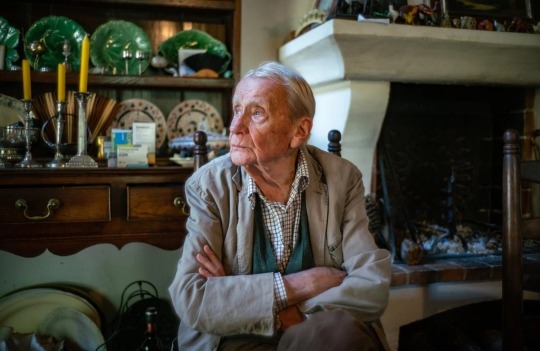
Christopher Tolkien at his home in the South of France one week before his 95th birthday last year. For nearly 50 years after his father died in 1973, he worked to keep alive the world he had created. [photo Credit: Josh Dolgin]
_________________________
Christopher Tolkien, the son of the writer J.R.R. Tolkien, who guarded his legacy and brought forth monumental posthumous works, like “The Silmarillion,” based on his father’s writings, died on Thursday in Provence, France. He was 95.
His death was confirmed by Daniel Klass, his brother-in-law.
For nearly 50 years after his father J.R.R. Tolkien died in 1973, Mr. Christopher Tolkien worked to keep alive the world his father had created in “The Hobbit” (1937) and “The Lord of the Rings” (1949). He edited or oversaw the publication of two dozen editions of his father’s works, many of which became international best sellers.
Mr. Tolkien was his father’s literary executor but played a far more expansive role than that title implies. While his father was writing “The Lord of the Rings”, his father was also creating a vast world of legends and mythologies that he hoped would accompany the book. However, being a perfectionist (and a procrastinator), his father was not able to complete the work before he died.
Mr. Tolkien spent four years organizing and compiling his father’s myths and legends, publishing them in 1977 as “The Silmarillion.”
-
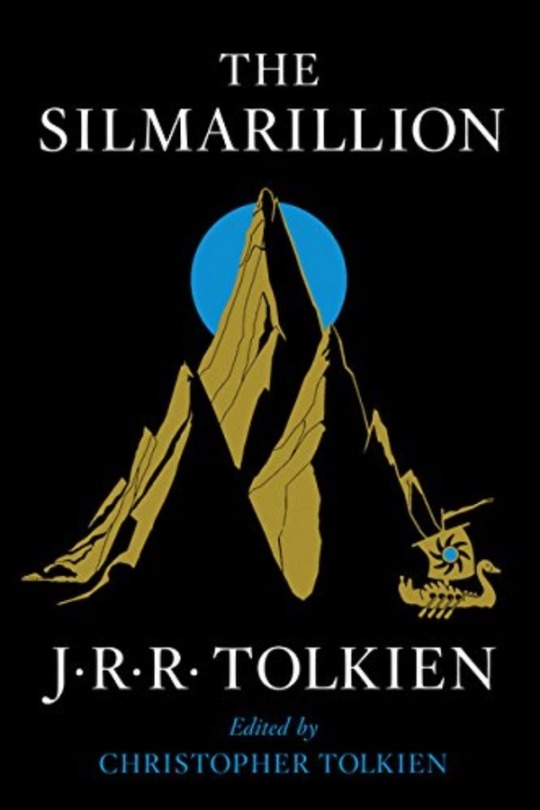
J.R.R. Tolkien's "The Silmarillion" was edited by his son, Christopher, and published posthumously in 1977.
-
But Tolkien fans and scholars wondered how much of “The Silmarillion” was the work of the father and how much was the work of the son, said Mr. Olsen, the president of the American online university Signum, which specializes in Tolkien studies.
In response, Christopher produced the 12-volume “The History of Middle-earth” (1996), a compilation of drafts, fragments, rewrites, marginal notes and other writings culled from 70 boxes of unpublished material. It showed that virtually everything he had published had come from his father’s hand.
Christopher Tolkien is also credited with creating the widely acclaimed 1954 map of Middle-earth, the land in which the sprawling stories were set; a copy is now held by the British Library.
“Without Christopher,” Thomas Shippey, a British professor who has been writing and lecturing on Tolkien for 50 years, said in an interview, “we would have very little knowledge of how Tolkien created his mythology and his own legendarium.”
His brother-in-law, Mr. Klass, described Mr. Tolkien as extraordinarily disciplined. He said he would lock himself in his office early in the morning and not emerge until lunchtime.
While the elder Tolkien was a specialist in Chaucer and Anglo-Saxon sagas, the younger was an authority, above all, on the reams of writing that his father produced. “His life’s work was to convert this huge mass of material written on envelopes and napkins in his father’s unreadable handwriting,” Mr. Klass said.
Tolkien fans responded on social media to the news of Mr. Tolkien’s death with an outpouring of emotion. “Takes a humble man to dedicate his life to someone else’s work,” one person wrote on Twitter. “I think of all the books that might never have been published without Christopher’s input. Some of those books define how we now view the professor’s legacy.”
Christopher Tolkien was born in Leeds, England, on Nov. 21, 1924, the third and youngest son of J.R.R. and Edith Mary (Bratt) Tolkien. Like his father, he was a sickly child, and often stayed home, giving him and his father a chance to develop a close working relationship. Christopher Tolkien once said that he grew up in the world his father had created. “For me,” he said, “the cities of ‘The Silmarillion’ are more real than Babylon.”
Also like his father, he fought in one of the great wars. During World War II, when Christopher was serving with the Royal Air Force in South Africa, his father mailed him parts of “The Lord of the Rings” for comment and editing.
Mr. Tolkien was also protective of his father’s legacy, suing Warner Brothers over the digital merchandising of characters from Lord of the Rings and The Hobbit (accusing the company of “causing harm to the Tolkien legacy”). The Tolkien estate also disavowed a film based on J.R.R. Tolkien’s life (saying the family did not approve, authorize, or participate in the project).
In his later years Mr. Tolkien became a French citizen and lived a private life with his second wife, Baillie Tolkien, in the foothills of the Alps in southeastern France.
______________
RPTV says: Thank you so much for all of your hard work, Mr. Christopher Tolkien. I had no idea how much of your time and energy you had put into organizing and compiling your father’s work, so I never appreciated it until now. Thank you for giving us Tolkien fans the greatest gift - more of your father’s stories, myths, and lore. Rest In Peace.
5 notes
·
View notes
Text
Event Report: Rhode Island Comic Con 2019

The eighth annual Rhode Island Comic Con took place November 1-3 at the Rhode Island Convention Center and the Dunkin Donuts Center in Providence, RI. With the new layout implemented the previous year proving to be successful, the show ran like a well-oiled machine. When not enamored by the countless vendors, I spent a good deal of the weekend in the panel rooms listening to anecdotes from a host of beloved actors.
The first panel of the weekend was with The Office's Brian Baumgartner (who played Kevin) and Leslie David Baker (who played Stanley). After being forced to turn away dozens of fans from last year's The Office Q&A with other cast members, the convention smartly booked the bigger panel room this time around. They discussed the show's longevity and the possibility of a revival. "It will never be the same," Baker stated, but they remain open to the idea; he encouraged fans to write to NBC if they want to see it. Many laughs were had, with Baumgartner occasionally slipping into his character’s voice, in addition to dropping not one but two "That's what she said!" jokes.
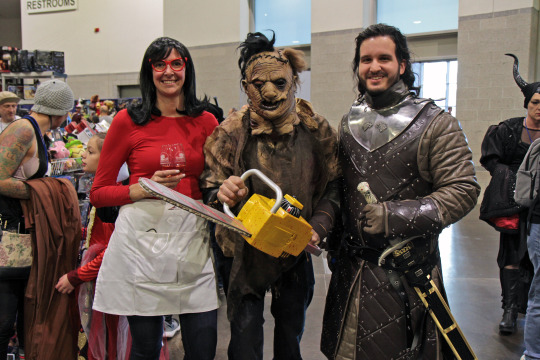
Richard Dreyfuss' panel immediately followed. The Academy Award-winning actor opened by saying that he has answered every Jaws question over the years, so if you ask one he hasn't heard he'll give you $10 - but if you ask one he has heard you owe him $10. He promised more than just funny stories from film sets - although that's what most people wanted to hear. More than half of the 45-minute discussion was dedicated to the absence of civics in today's educational system, a subject on which Dreyfuss wrote a soon-to-be-published book. He did answer a few film-related questions, but the moderator - a local podcast host - did not help the situation.
A Q&A with Freddy Krueger himself, Robert Englund, was a fun way to cap off the first day. A born storyteller with an encyclopedic knowledge of film, his panels are always fascinating. He discussed his work in the A Nightmare on Elm Street franchise at length, citing Part 4 has his favorite performance, New Nightmare as his favorite to make, and Tina from Part 1 as his favorite death scene. With questions culled from Behind the Mask: The Rise of Leslie Vernon, Galaxy of Terror, and Never Too Young to Die, Englund called it his most esoteric panel. He concluded by telling the audience about True Terror, a new Travel Channel series he's hosting that's set to premiere in February.
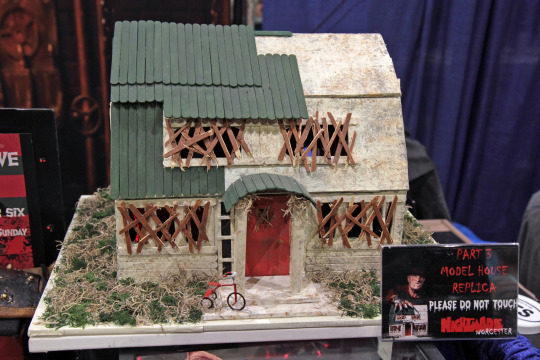
I've never watched a single episode of Star Trek, but I had a hunch that William Shatner's panel would be wildly entertaining - and he proved me right. With no need for a moderator, he began by telling the captive audience about The Ride, an upcoming documentary following his eight-day motorcycle journey from Chicago to Los Angeles, and his new blues album that's due out next year. Surprisingly, there were no Star Trek questions; topics of conversation ranged from Judgment at Nuremberg and Better Late Than Never to working with whales and his likeness being used for Michael Myers' mask in Halloween.
The godfather of the modern action figure, Marty Abrams, shared the fascinating story of his Mego Corporation. While Abrams remained diplomatic, Mego consultant Paul Clarke asserted their side of the infamous Star Wars story. Abrams did not pass on the Star Wars license; he was in Japan working on Micronauts and never had a meeting. In a "perfect storm," Kenner happened to be located in the same building and signed the deal before Abrams returned. He estimates it cost him billions of dollars. It was a riveting companion to the Kenner-centric Star Wars episode of Netflix's The Toys That Made Us. Abrams also revealed that a Micronauts TV series and movie are in development. The recently relaunched Mego is looking into more contemporary packaging and more play value to appeal to the younger demographic. They're also continuing to expand their licenses, with Star Trek: The Next Generation coming soon.
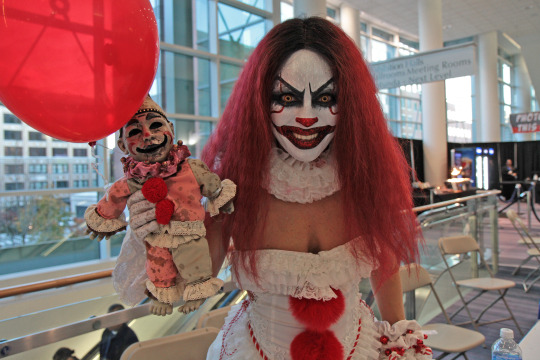
I attempted to attend the Stranger Things panel on Saturday evening, but my lack of a mysterious wristband - about which no advanced information was issued - prevented me from doing so. It was a blessing in disguise, however, as I used the spare time to score a front-row seat for Elijah Wood's Q&A. Despite being one of the headlining guests, Wood was in the smaller panel room, which quickly reached capacity.
Wood shared several anecdotes about The Lord of the Rings, confirming that the fellowship actors have matching tattoos and disclosing that he has never read J.R.R. Tolkien's source material. ("I lived the books," he quipped.) He revealed that although Dirk Gently's Holistic Detective Agency is likely done for good, there have been talks of an animated continuation. He also expressed his desire to direct, stating that he would gravitate toward genre films. He cited The Thing, The Exorcist, Rosemary's Baby, Don't Look Now, Carrie, and The Innocents as his favorite horror films, with Goodnight Mommy, Hereditary, and The Witch being recent favorites. He even rushed off stage to hug a Canadian fan who drove over four hours to see Mandy - produced by Wood's SpectreVision - on the big screen.
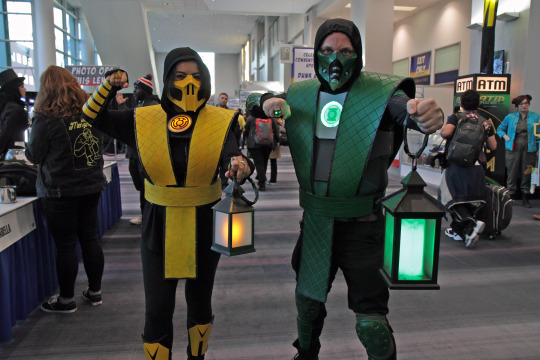
Sunday morning kicked off with Christina Ricci's panel. A self-described "very different child," she hypothesized that being raised in a chaotic atmosphere led her to darker roles as a child actress, but playing those parts also impacted her. She cites Buffalo 66 and The Ice Storm among the roles she's most proud of. She loved the technical aspects of working on The Addams Family and considers herself particularly lucky to have worked with Raul Julia. When asked about playing Morticia in an Addams Family reboot, she said she'd be happy to, but it would make more sense for her to play an adult Wednesday. She also discussed making her debut at the age of 7 in a Saturday Night Live skit, an embarrassing experience filming Casper’s kissing scene in the early days of CGI, smoking her first cigarette with Winona Ryder on the set of Mermaids, and understanding the importance of Lizzie Borden upon appearing in New England that weekend.
Like his Star Trek co-star, George Takei was not accompanied by a moderator. He began by speaking about They Called Us Enemy, his new graphic novel about being imprisoned in a Japanese-American interment camp at the age of 5 following the bombing of Pearl Harbor, despite the fact that he and his family were born in America. The subject matter sadly remains relevant, but it was heartening to hear his resolve as well as the audience's reaction. The actor/activist also publicly revealed his support of Pete Buttigieg for the Democratic presidential nomination. He discussed how Star Trek has "lived long and prospered" for over 50 years before proudly speaking about his recent work on AMC's The Terror: Infamy, on which he served as a consultant in addition to acting. While answering fan questions, he shared a humorous anecdote about doing the Howard Stern show for the first time without knowing what he was getting into.
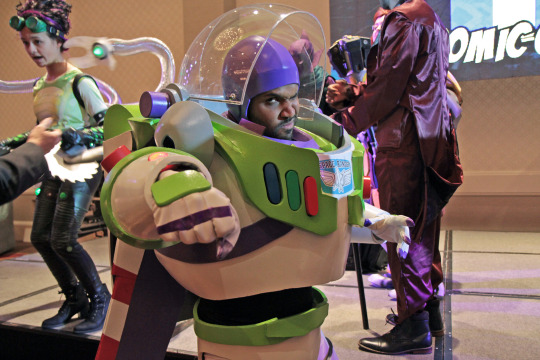
Rhode Island Comic Con marked comedy legend Chevy Chase's first convention, leading a Vacation family reunion, and saw the final public appearance of Sesame Street's former Big Bird and Oscar the Grouch, Caroll Spinney. In addition to those mentioned, the guest list included Gaten Matarazzo (Stranger Things), Benedict Wong (Doctor Strange), Evanna Lynch (Harry Potter), Alfie Allen (Game of Thrones), Anthony Michael Hall (The Breakfast Club), Patrick Warburton (The Tick), Alex Kingston (Doctor Who), Robert Patrick (Terminator 2), Steven Yeun (The Walking Dead), Lou Ferrigno (The Incredible Hulk), Jaleel White (Family Matters), Richard Brake (Three from Hell), professional wrestling legend Mick Foley, and dozens more.
Beyond the impressive line-up of celebrity guests and a wide variety of vendors, Rhode Island Comic Con also featured comic book creators ranging from big names to indie up-and-comers, exclusive merchandise, after parties, kids activities, geek speed dating, and more. Cosplayers are always a highlight, so I was eager to catch the costume contest on Sunday afternoon. A great Buzz Lightyear - who nailed not only the costume but also the mannerisms - took home the grand prize, bringing the weekend’s fun to infinity and beyond.
Click here to see all of my Rhode Island Comic Con 2019 photos.
#rhode island comic con#christina ricci#elijah wood#robert englund#richard dreyfuss#william shater#george takei#article#event report#cosplay#the office#brian baumgartner#leslie david baker#chevy chase#freddy krueger
13 notes
·
View notes
Text
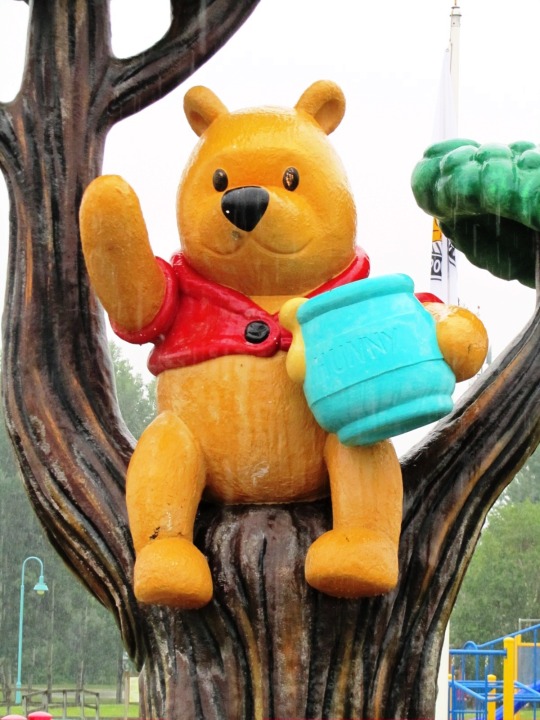
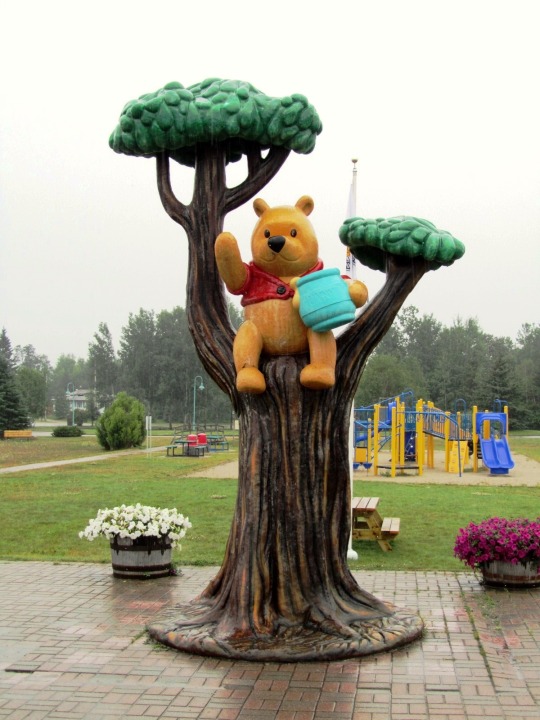
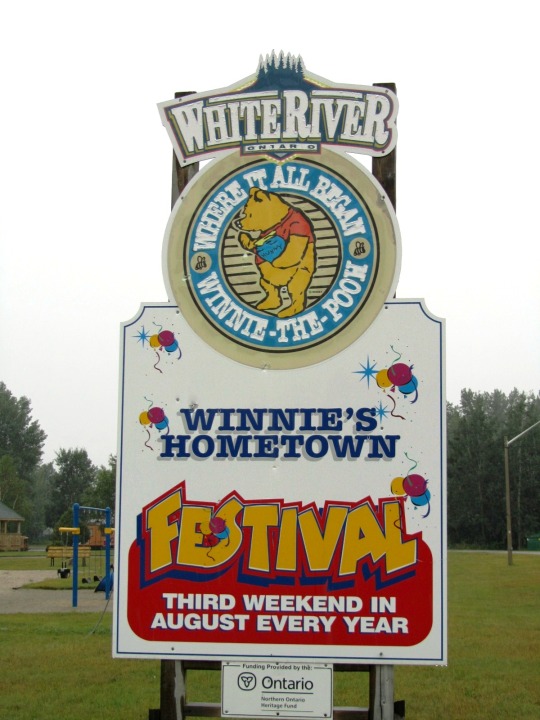

National Winnie the Pooh Day
Grab a pot of “hunny”, enjoy a game of Poohsticks and revisit these beloved childhood stories about a bear and all his friends
One of the cuddliest holidays around has to be National Winnie the Pooh Day, celebrated on the birthday of author A. A. Milne. It’s one special anniversary fans just can’t bear to miss! Every year, the occasion is marked with events such as teddy bears’ picnics, featuring plenty of honey on the menu.
History Of Winnie The Pooh Day
Winnie the Pooh first appeared on the printed page in 1926, together with friends Piglet, Tigger, and Eeyore. All of them were based on toys owned by the author’s son, who also featured in the famous stories as Christopher Robin. The character later starred in a series of much-loved Disney films.
The name Winnie, for instance, came from Milne’s teddy bear Winnie. The “Pooh” part was from the nickname of a swan he’d met on holiday. The rest of the names, besides those mentioned above, were purely creations of his mind and allegedly did not refer to any objects in the real world.
The story and adventures of Winnie the Pooh are set in the ancient Ashdown Forest of East Sussex. The area features beautiful open heathland, wooded areas, and high ridges. Locals consider it an area of outstanding natural beauty.
Many stories in Winnie the Pooh have clear associations with locations in the forest. The illustrations that accompanied the original books often depicted scenes from this part of the world. Pooh, Tigger, and the crew are regularly seen marching through beautiful gorse, heather, bracken, and silver birch, all popular in the Ashdown area.
The landscapes were an essential part of what helped to make Winnie the Pooh such a compelling pop phenomenon. Like J.R.R Tolkien, Milne had found something unique and persuasive in the English countryside. There was deep magic about it that lent itself to pure escapism. The idea of friendly animal characters adventuring in such an area whisked audiences off to another world that had nothing to do with the pressures of the modern economy.
The first-ever Pooh stories appeared in a Christmas special edition of the Evening Standard newspaper in December 1924. The first book Winnie-the-Pooh emerged around a year later. It told the very first stories of Pooh and his compatriots as they humorously toured through idyllic country scenes, collecting honey and arguing pleasantly.
The Winnie the Pooh brand remained in the Milne family until 1930 until television and merchandising expert, Stephen Slesinger, bought out the rights. Milne received a $1,000 payment upfront plus 66 percent of the income generated by Slesinger’s efforts. Over the next thirty years, Winnie-the-Pooh transformed into a $50 million-a-year franchise – a testament to its tremendous popularity.
Pooh ceased being solely a storybook character. He soon grew into a film star, musician, and toy brand. No longer was the concept confined to the pages of a book. Winnie-the-Pooh had a very real presence in the world.
Throughout it all, though, Slesinger and the Milne family remained faithful to the original character of Winnie-the-Pooh. At first blush, everyone’s favorite yellow bear seems a little slow and dim-witted. But as the stories develop, you soon see endearing aspects of his character and profound emotional intelligence.
Pooh is keenly aware of his intellectual limitations, but this is an aspect that makes him so lovable. There’s no pretense about the bear. He just wants to live his life and find practical, hands-on solutions to problems. Examples of his down-to-Earth nature abound from his rescuing of Eeyore from a river to Poohsticks’ invention.
Pooh is also extremely fond of food and not afraid to indulge a little in life’s pleasures. He loves what he calls “hunny” and will go to great lengths to acquire it.
Most of the time, Pooh hangs out with his friends. He is a social creature, always interested in the lives of others. He makes a habit of spending time with the other animals of the forest and ensures that their needs are met. He is a kind of steward and a leader, without people realizing it.
When Disney bought the rights to the franchise in 1966, they were keen to keep Pooh’s lovable persona intact. Bosses at the studio knew that it was a winning formula and something people instinctively loved. Pooh hit the big time, thanks to animated productions from the cartoon maker.
The first production in 1966 was a theatrical “featurette” called Winnie the Pooh and the Honey Tree. Later, Disney followed up these productions with Winnie the Pooh and the Blustery Day and Winnie the Pooh and Tigger Too in 1974.
Seeing the demand for a feature-length film, the studio combined all three into The Many Adventures of Winnie the Pooh.
Things kicked off for the franchise after 1980. Producers gave the go-ahead for a series of new movies and television series that exposed entire generations of children to the concept. The first of these was Welcome to Pooh Corner, which ran from 1983 to 1986. After that came The New Adventures of Winnie the Pooh and My Friends Tigger & Pooh.
Ultimate, Milne intended Winnie the Pooh as a work that would comfort, not challenge. And that remains very much the essence of the franchise to this day.
How to Celebrate Winnie The Pooh Day
Thanks to the sheer number of films, books, and TV adaptations, there are all kinds of ways you can enjoy National Winnie the Pooh Day. In fact, there’s so much content to consume, there’s no way you’ll get it all done in twenty-four hours. Oh well, there’s always next year!
If you’re the sort of person who loves the history of Winnie the Pooh, why not spend the day reading Milne’s original works, starting with the Christmas edition of the 1924 Evening Standard? Then move on to reading the compilation stories to get a sense of how the author originally envisioned the character.
After that, it might be fun to move on to later adaptations of Pooh to see how he evolved over time. Often, you’ll find striking consistency, and sometimes you’ll find small cultural context changes here and there. Overall, though, it is incredible how similar the modern incarnation is to his historical counterpart.
Indulging in a Winnie the Pooh movie marathon can also be a lot of fun. You could watch all the films from the 1970s until the present, back to back.
Winnie the Pooh was also a massive lover of food, especially honey. Nothing is stopping you from recreating his favorite recipes from the books and movies.
Finally, one extra-special way to mark the day is to visit Pooh Corner in Hartfield, East Sussex, where the books were written. You can pick up a map to follow in the characters’ footsteps, and even play a game of Poohsticks on the original bridge.
Celebrating National Winnie the Pooh Day, therefore, is way easier than you might think. Dressing up as a bear, eating lots of honey, and watching your favorite Pooh movies are all great options.
Source
#National Winnie the Pooh Day#WinnieThePoohDay#18 January#White River#Ontario#Winnie-the-Pooh#Winnie's hometown#Canada#travel#outdoors#landmark#original photography#summer 2012#sculpture#it ain't Disney's Winnie#A.A. Milne#born#18 January 1882#NationalWinniethePoohDay#roadside attraction#tourist attraction#children's book#author#writer#vacation#birthday#anniversary#culture#cityscape
1 note
·
View note
Text
Adapting to Adaptations
Some people say this is the golden age of television. Netflix Hulu and Amazon are developing their own original series to much critical acclaim and much of what spring-boarded them into success was adapting pre-existing works from other formats. House of Cards, Orange is the New Black, and Hemlock Grove, some of Netflix’s earlier and more successful series were all based on books, and more and more cable networks are optioning scripted series to compete with streaming services and the likes of HBO and Showtime. Others say that we’re in an endless age of recycling the same thing over and over. That the lack of originality is killing more creative works by sucking all the oxygen out of the room. When Disney, a company already astute at milking series for all they were worth, acquired the mega-franchises of Marvel Comics and Star-Wars, they guaranteed that both creative universes would live forever. This is great news for the fans, who can now look forward to reboot after reboot of their favorite stories, but when theaters have to compete for every hard-earned dollar an increasingly selective audience will spend at the box office, rehashing the same blockbusters repeatedly means that other, more esoteric movies will not even be shown. Despite the challenges these trends present for new writers, I feel that overall, the proliferation of adaptations and the fragmentation of the media market are good for creators.
Let me explain why.
When I was growing up, three media franchises had a profound effect on me. Looking back on them now, I realize they each had their own unique gifts to give me, not only as a consumer of stories but as a student of storytelling.
FRANCHISE 1: Pokémon - Video Games and World Building serve as a springboard for fiction.
Featuring a video game world of lavish detail and intricate mechanics for its time, the Pokémon franchise was created by a game journalist named Satoshi Tajiri as a passion project. Pokémon has turned into one of the most successful video game and media franchises in the world.
The concept of the games is simple, Tajiri wanted to capture the spirit of insect collecting that he had enjoyed as a child, but with a fantasy angle. In the game, children go on quests to capture and train “pocket monsters.” Elemental beasts that inhabit the world instead of wild animals. Pokémon trainers can trade their Pokémon with each other or pit them against one another in (kid friendly) gladiatorial battles. The battles are turn-based and much of the strategy, like in other RPGs requires you to play to the monsters’ strength or weakness types and stats. For example, Fire beats Grass, etc.
My first experience with Pokémon though was not the video games, but with the Trading Card Game, which brought the idea of strategic collecting and battling to the real world. I became interested in the show and games shortly after that, but if it weren’t for adaptation of the Pokémon games into other media, my experience would have been different.
The exploration of the created system inspires the player to imbue the tasks they undertake with added meaning or drama. Building on the fundamental plot of the video games, the player enhances the addictive gameplay with personal meaning. Fans of the series, loving the world, creatures and concepts Tajiri created, went on to adapt the world of Pokemon into Manga (comics), Anime (animated TV series), Feature Animated Films, a Wildly popular Trading Card Game. The scaffolding provided by Tajiri provides the basis for players, myself included, to attach their own epic quests to the repetitive strategic tasks of the gameplay. The video game mechanics lend themselves to replay value and inspire storytelling through other media, in the same fictional world.

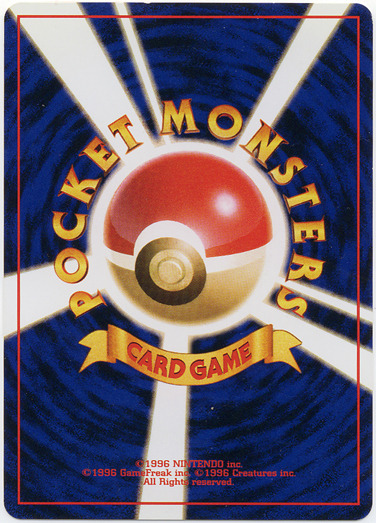
FRANCHISE 2: Harry Potter - Addictively good fiction leads to empire building franchises; If you tell a good story, they will come.
I don’t need to tell you what Harry Potter is, or how huge a phenomenon it is. Really, Harry Potter and Pokémon need little to no introduction. Still, the fictional world of Harry Potter is compelling on multiple levels. It’s compelling because it follows the typical hero’s journey in a unique and more modern way, drawing on other classic fantasy works already in the collective cultural deposits and making them accessible to everyone. It’s compelling because author J.K. Rowling’s world-building is as in-depth as Tajiri's, allowing fans to immerse themselves in her created space and stake out their own nooks to explore through fanfiction, and cross-media adaptation. Third, the story of Harry Potter is compelling because, in many ways, it mirrors the journey of its creator. Harry Potter is a rags-to-riches, coming-of-age story about a young boy who rises out of a lowly situation to become famous and beloved. Similar to the eponymous hero, J.K. Rowling brought the story of Harry Potter to life as a struggling single mother who was rejected by multiple publishing houses, only to turn it into one of, if not THE most successful book series in the world. The smash success of the books spawned adaptations to film, video games and various additional merchandise, such as board games, clothes and toys inspired by the “Wizarding World.”
Rowling’s modern-fantasy reimagining of the Hero’s Journey has captured the imaginations of millions. Like Pokémon, Harry Potter is an excellent example of world building. Unlike Pokémon, the mechanical structure of media like video games was not the main driver of its success but contributed to that success and was further built upon as created works proliferated, inspired by the excellent fiction writing skills of J.K. Rowling.
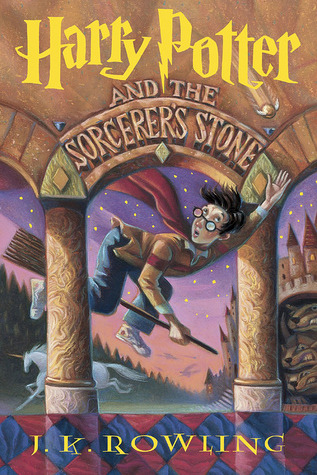

FRANCHISE 3: Middle Earth – World building at an unparalleled level, coupled with excellent fiction writing and adaptation skills, leads to the creation of a classic.
J.R.R. Tolkien’s story-universe Middle Earth, the setting of famous The Hobbit and The Lord of the Rings tales as well as many other stories is one of my most beloved worlds to explore. I first encountered Middle-Earth because of adaptation. I was first introduced to The Hobbit through a radio dramatization of the book. After that, I read the novel and later, The Lord of the Rings. I listened to the audiobooks, watched and own all of the movies, and have played several of the video games. The video games that I felt were the worthiest contributions to the franchise were the ones that were either direct adaptations of the source material or entirely new works based on the same world. In recent news, Amazon will be creating a new series based on the world of Middle Earth.
Tolkien’s world-building has inspired many. Aside from the various adaptations mentioned already, it is also credited as the inspiration of the popular tabletop RPG Dungeons & Dragons, not to mention the countless “high-fantasy” or “sword and sorcery” titles that have followed and owe it a debt. Tolkien did not create The Lord of the Rings in a vacuum, however; he borrowed heavily from Anglo-Saxon mythology, Norse Mythology, and Judeo-Christian Mythology. Interpreting and compiling them with his love of languages, Tolkien labored to create his own languages and build the world and peoples that would have created them. The point is, that Tolkien himself was an “adapter,” in fact, he translated one of the versions of Beowulf that we have today. Tolkien’s adaptations spawned other adaptations of his work and inspired many others. The reason his works are so beloved and of such high quality is because of his fantastic world-building abilities, his ability to spin a tale, and his own skills at riffing on the cultural heritage available to him. This combination ensures stories that a wide audience can engage and explore.
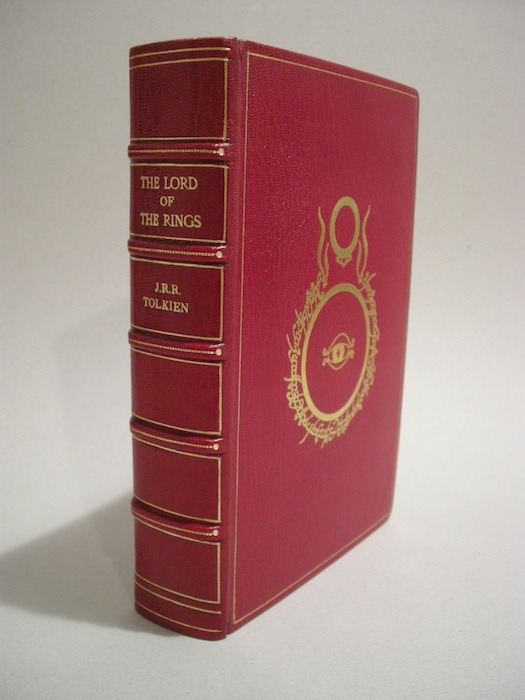
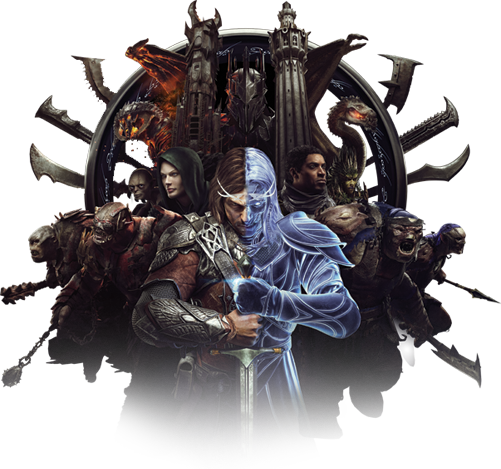
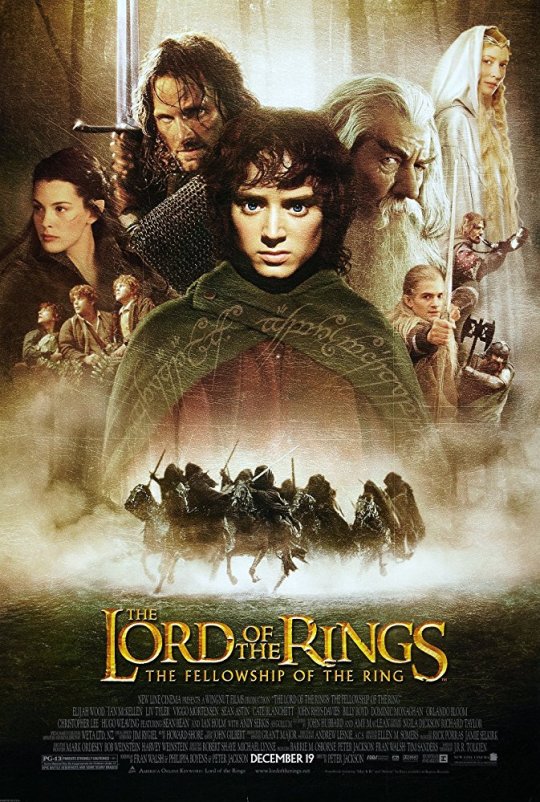
The idea that this increase in rebooting or adapting of existing works is a new problem, or even a problem at all, is a fallacy. There is “nothing new under the sun,” as the saying goes. The increased reimagining of work is to be welcomed. It provides an opportunity for new creators to flex their muscles while paying tribute to the works they admire. It could be a problem if, as stated previously, adaptations were all that was being created at the expense of all other content. Fortunately, though, the media market is shifting, and there are now more ways than ever to produce and publish content. So, let the major production companies rehash the stories that we already know and love. They have money to do it right and to do them justice. The rise of new streaming services and original television or web-series programming empowers creators to produce their own original works and expose them to the public eye in due time. I, for one, am glad to be along for the ride.
1 note
·
View note
Photo

Amazon Sets ‘The Lord of the Rings’ TV Series In Mega Deal With Multi-Season Commitment
In its quest to launch a hit fantasy series of the Game of Thrones caliber, Amazon has closed a massive deal — said to be close to $250 million — to acquire global TV rights to The Lord of the Rings, based on the fantasy novels by J.R.R. Tolkien. The streaming service has given a multi-season commitment to a LOTR series in the pact, which also includes a potential spinoff series.
The LOTR original series, a prequel to Tolkien’s The Fellowship of the Ring, will be produced by Amazon Studios in cooperation with the Tolkien Estate and Trust; HarperCollins; and New Line Cinema, a division of Warner Bros. Entertainment, which produced the hugely successful LOTR movie franchise.
No details about the deal were disclosed, but it believed to be dwarfing any TV series pact to date with a whopping price tag attached.
Amazon, Netflix and HBO had been approached by the Tolkien estate, who had been shopping the project. It came with an upfront rights payment said to be in the $200 million-$250 million range. That is just for the rights, before any costs for development, talent and production, in proposition whose finances industry observers called “insane.” It is a payment that is made sight unseen as there is no concept, and there are no creative auspices attached to the possible series. On top of that, the budget for a fantasy series of that magnitude is likely to be $100 million-$150 million a season.
“The Lord of the Rings is a cultural phenomenon that has captured the imagination of generations of fans through literature and the big screen,” said Sharon Tal Yguado, Head of Scripted Series at Amazon Studios. “We are honored to be working with the Tolkien Estate and Trust, HarperCollins and New Line on this exciting collaboration for television and are thrilled to be taking The Lord of the Rings fans on a new epic journey in Middle Earth.”
Set in Middle Earth, the television adaptation will explore new storylines preceding Tolkien’s The Fellowship of the Ring.
“We are delighted that Amazon, with its longstanding commitment to literature, is the home of the first-ever multi-season television series for The Lord of the Rings,” said Matt Galsor, a representative for the Tolkien Estate and Trust and HarperCollins. “Sharon and the team at Amazon Studios have exceptional ideas to bring to the screen previously unexplored stories based on J.R.R. Tolkien’s original writings.”
Given Amazon’s mandate to launch a big fantasy series of the scope of Game of Thrones, which comes directly from honcho Jeff Bezos and Amazon’s deep coffers, the company was considered the leading contender for a Lord of the Rings series. Bezos has been hands-on involved in the matters of entertainment division Amazon Studios following the purge of its top executives, led by Roy Price, and has been taking meetings and making calls to agents.
The Lord of the Rings deal eclipses some big-ticket series commitments Amazon has made during the past couple of years: $80 million for the six-episode Woody Allen show Crisis in Six Scenes, $70 million-plus for Matt Weiner’s eight-episode The Romanoffs and $160 million for two seasons of David O. Russell’s series, which now has been axed after about $40 million spent. (The last two series originally came from The Weinstein Co., which no longer has involvement in The Romanoffs)
The Tolkien estate and publisher HarperCollins filed the massive lawsuit in November 2012 against Warner Bros., its subsidiary New Line and Middle-earth Enterprises — a division of Rings’ Hobbit rightsholder the Saul Zaentz Co. — claiming copyright infringement and breach of contract over video games, online slot machines and other digital merchandising.
With the $80 million lawsuit settled in July, the two sides have gotten on better terms following the bitter feud. The Tolkien estate shopped the TV series on its own, with Warner Bros.’ blessing. Warner Bros. TV, which would’ve been a logical partner, is not a studio on the LOTR series, which will be produced by Amazon Studios.
A LOTR TV series will provide corporate synergy for Amazon, the world’s leading book seller. The Lord of the Rings novels was named Amazon customers’ favorite book of the millennium in 1999. Still, that world already has been extensively explored on-screen with three great Lord of the Rings movies and three Hobbit films.
#Game of Thrones#Amazon#Amazon Studios#The Lord of the Rings#J.R.R. Tolkien#Tolkien Estate and Trust#HarperCollins#New Line Cinema#Warner Bros. Entertainment#Netflix#HBO#Sharon Tal Yguado#Matt Galsor
2 notes
·
View notes
Text
Book Review: The Star Wars Archives 1977-1983
For anyone younger than twenty in 1977, the first "Star Wars" movie came like a bolt from outer space, revolutionary in its blend of drama, mythology, and special effects. “I love kids, and I think movies are really for young people because films can help them or shape their lives,” says George Lucas, the “onlie begetter” of this extraordinary sci-fi series. Peter Jackson, whose "Lord of the Rings trilogy" also touched that chord, has called Lucas “the Thomas Edison of the modern film industry.”
Dozens of books have been devoted to Star Wars and its various offspring and sequels, but trust Taschen to create the most comprehensive guide imaginable for the first three films. Diehard fans will swoon over the 1,232 illustrations and minuscule detail concerning the technical challenges that faced Lucas and his crew during that seven-year period. Younger filmgoers who have been reared on "Star Wars" Episodes I, II, and III may feel that characters like Ewan McGregor's Obi-Wan, Liam Neeson's Qui-Gon Jinn, and Natalie Portman's Padmé should have been featured. As the ever-reliable editor, Paul Duncan, explained to me in an email, however: “From a practical point of view it was easier to do three films, and it made sense to cover it as a trilogy over a short period of time. When I was writing it, I also realized that it made poetic sense too - the first film was made against the odds and became a phenomenal success despite Lucas's disappointment with it. The second film was another trial by fire as cost overruns and delays almost forced Lucas to sell 'Star Wars' back to Fox – but 'The Empire Strikes Back''s success helped to kickstart Lucasfilm as an independent entity.”
Duncan offers an excellent survey of Lucas' career up to 1976, when he was the first Vice-President of Francis Coppola's American Zoetrope, revealed a distinct talent for drawing, and followed Coppola's advice to write his own screenplays. His friends and contemporaries in San Francisco included Walter Murch (his first editor), Michael Ritchie, and John Korty. All were non-conformists as far as Hollywood and the studio system were concerned. Although the book includes a valuable interview with sound guru Ben Burtt, there is scant mention of the Dolby Stereo, which enhanced the 70mm experience to such a degree that Alan Ladd Jr., then President of 20th Century Fox, issued a directive to theatres saying that if they wanted "Star Wars" in 70mm, they must be equipped for Dolby Stereo.
Lucas initially described "Star Wars" as a blend of "2001: A Space Odyssey," "Lawrence of Arabia," and James Bond. The film began life as a 14-page typed treatment in May of 1973. Lucas had spent four years trying to get John Milius' "Apocalypse Now" script off the ground, and when that failed (to be taken up, with historic consequences. by Coppola), he worked night and day to develop Star Wars, to retain control of the property despite financial setbacks, and to assemble a team of brilliant designers and technicians including Joe Johnston, Ralph McQuarrie, John Barry, and cinematographer Gilbert Taylor.
A film buff to his fingertips, Lucas paid homage to directors like Fellini, Kurosawa and Fritz Lang (C-3PO resembles Brigitte Helm's female robot in "Metropolis"). He wanted music in the tradition of Erich Wolfgang Korngold or Gustav Holst, and followed Steven Spielberg's advice to commission John Williams to write the score.
"Star Wars" and its sequels proved labor-intensive because every device and every character had to be designed with meticulous care as well as inventiveness. “The 'Star Wars' films are basically visual movements with music,” notes Lucas, and he applied himself indefatigably to the task. He established Industrial Light and Magic, which would become the preeminent facility for CGI and special effects on so many blockbusters beyond "Star Wars," notably "Jurassic Park." And he took merchandising to an altogether new level. Every kid worth their salt at the turn of the 1980s had a bedroom packed with "Star Wars" figurines.
Although the stills and designs remain the glory of this massive, 13-pound tome, Paul Duncan's three-day conversation with Lucas yields so much more about the creative process than the shy mogul has ever spoken of before. “Most of this filmmaking effort,” he confides, “is so I can create a dream, a dream I've had for a long time, which is to build a research retreat for film.” Thus was born Skywalker Ranch, nestled in the countryside of Marin County.
While movie critics have never considered George Lucas as an auteur, he retains an iconic status as a fount of entertainment, creator of a fantasy world as resonant as those of J.R.R. Tolkien, C.S. Lewis or J.K. Rowling. Paul Duncan's sterling endeavor pays him the tribute he richly deserves.
from All Content https://ift.tt/2CrCG8s
0 notes
Photo




National Winnie the Pooh Day
Grab a pot of “hunny”, enjoy a game of Poohsticks and revisit these beloved childhood stories about a bear and all his friends.
One of the cuddliest holidays around has to be National Winnie the Pooh Day, celebrated on the birthday of author A. A. Milne (January 18, 1882). It’s one special anniversary fans just can’t bear to miss! Every year, the occasion is marked with events such as teddy bears’ picnics, featuring plenty of honey on the menu.
History Of Winnie The Pooh Day
Winnie the Pooh first appeared on the printed page in 1926, together with friends Piglet, Tigger, and Eeyore. All of them were based on toys owned by the author’s son, who also featured in the famous stories as Christopher Robin. The character later starred in a series of much-loved Disney films.
The name Winnie, for instance, came from Milne’s teddy bear Winnie. The “Pooh” part was from the nickname of a swan he’d met on holiday. The rest of the names, besides those mentioned above, were purely creations of his mind and allegedly did not refer to any objects in the real world.
The story and adventures of Winnie the Pooh are set in the ancient Ashdown Forest of East Sussex. The area features beautiful open heathland, wooded areas, and high ridges. Locals consider it an area of outstanding natural beauty.
Many stories in Winnie the Pooh have clear associations with locations in the forest. The illustrations that accompanied the original books often depicted scenes from this part of the world. Pooh, Tigger, and the crew are regularly seen marching through beautiful gorse, heather, bracken, and silver birch, all popular in the Ashdown area.
The landscapes were an essential part of what helped to make Winnie the Pooh such a compelling pop phenomenon. Like J.R.R Tolkien, Milne had found something unique and persuasive in the English countryside. There was deep magic about it that lent itself to pure escapism. The idea of friendly animal characters adventuring in such an area whisked audiences off to another world that had nothing to do with the pressures of the modern economy.
The first-ever Pooh stories appeared in a Christmas special edition of the Evening Standard newspaper in December 1924. The first book Winnie-the-Pooh emerged around a year later. It told the very first stories of Pooh and his compatriots as they humorously toured through idyllic country scenes, collecting honey and arguing pleasantly.
The Winnie the Pooh brand remained in the Milne family until 1930 until television and merchandising expert, Stephen Slesinger, bought out the rights. Milne received a $1,000 payment upfront plus 66 percent of the income generated by Slesinger’s efforts. Over the next thirty years, Winnie-the-Pooh transformed into a $50 million-a-year franchise – a testament to its tremendous popularity.
Pooh ceased being solely a storybook character. He soon grew into a film star, musician, and toy brand. No longer was the concept confined to the pages of a book. Winnie-the-Pooh had a very real presence in the world.
Throughout it all, though, Slesinger and the Milne family remained faithful to the original character of Winnie-the-Pooh. At first blush, everyone’s favorite yellow bear seems a little slow and dim-witted. But as the stories develop, you soon see endearing aspects of his character and profound emotional intelligence.
Pooh is keenly aware of his intellectual limitations, but this is an aspect that makes him so lovable. There’s no pretense about the bear. He just wants to live his life and find practical, hands-on solutions to problems. Examples of his down-to-Earth nature abound from his rescuing of Eeyore from a river to Poohsticks’ invention.
Pooh is also extremely fond of food and not afraid to indulge a little in life’s pleasures. He loves what he calls “hunny” and will go to great lengths to acquire it.
Most of the time, Pooh hangs out with his friends. He is a social creature, always interested in the lives of others. He makes a habit of spending time with the other animals of the forest and ensures that their needs are met. He is a kind of steward and a leader, without people realizing it.
When Disney bought the rights to the franchise in 1966, they were keen to keep Pooh’s lovable persona intact. Bosses at the studio knew that it was a winning formula and something people instinctively loved. Pooh hit the big time, thanks to animated productions from the cartoon maker.
The first production in 1966 was a theatrical “featurette” called Winnie the Pooh and the Honey Tree. Later, Disney followed up these productions with Winnie the Pooh and the Blustery Day and Winnie the Pooh and Tigger Too in 1974.
Seeing the demand for a feature-length film, the studio combined all three into The Many Adventures of Winnie the Pooh.
Things kicked off for the franchise after 1980. Producers gave the go-ahead for a series of new movies and television series that exposed entire generations of children to the concept. The first of these was Welcome to Pooh Corner, which ran from 1983 to 1986. After that came The New Adventures of Winnie the Pooh and My Friends Tigger & Pooh.
Ultimate, Milne intended Winnie the Pooh as a work that would comfort, not challenge. And that remains very much the essence of the franchise to this day.
How to Celebrate Winnie The Pooh Day
Thanks to the sheer number of films, books, and TV adaptations, there are all kinds of ways you can enjoy National Winnie the Pooh Day. In fact, there’s so much content to consume, there’s no way you’ll get it all done in twenty-four hours. Oh well, there’s always next year!
If you’re the sort of person who loves the history of Winnie the Pooh, why not spend the day reading Milne’s original works, starting with the Christmas edition of the 1924 Evening Standard? Then move on to reading the compilation stories to get a sense of how the author originally envisioned the character.
After that, it might be fun to move on to later adaptations of Pooh to see how he evolved over time. Often, you’ll find striking consistency, and sometimes you’ll find small cultural context changes here and there. Overall, though, it is incredible how similar the modern incarnation is to his historical counterpart.
Indulging in a Winnie the Pooh movie marathon can also be a lot of fun. You could watch all the films from the 1970s until the present, back to back.
Winnie the Pooh was also a massive lover of food, especially honey. Nothing is stopping you from recreating his favorite recipes from the books and movies.
Finally, one extra-special way to mark the day is to visit Pooh Corner in Hartfield, East Sussex, where the books were written. You can pick up a map to follow in the characters’ footsteps, and even play a game of Poohsticks on the original bridge.
Celebrating National Winnie the Pooh Day, therefore, is way easier than you might think. Dressing up as a bear, eating lots of honey, and watching your favorite Pooh movies are all great options.
Source
#National Winnie the Pooh Day#18 January#NationalWinniethePoohDay#travel#rainy day#playground#White River#Ontario#summer 2012#roadside attraction#tourist attraction#landmark#Canada#original photography#Winnie's Hometown#sign#cityscape#small town#A.A. Milne#author#writer#Alan Alexander Milne#birthday#anniversary#history#culture#children's book#sculpture
0 notes
Photo
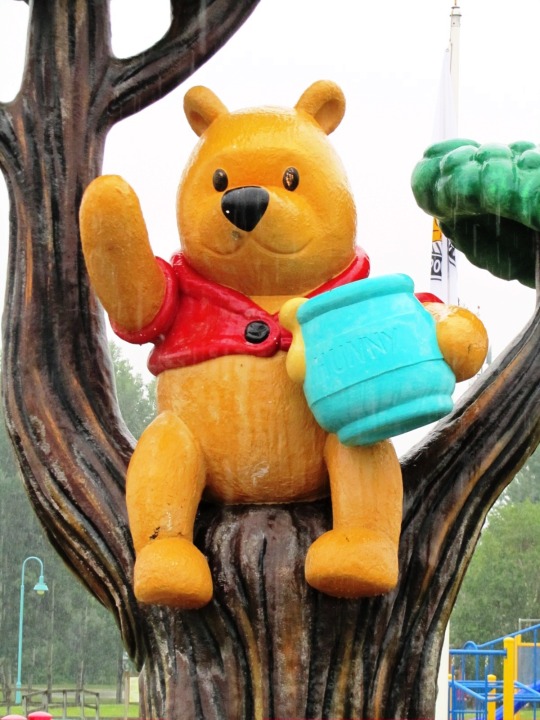



National Winnie the Pooh Day
Grab a pot of “hunny”, enjoy a game of Poohsticks and revisit these beloved childhood stories about a bear and all his friends.
One of the cuddliest holidays around has to be National Winnie the Pooh Day, celebrated on the birthday of author A. A. Milne. It’s one special anniversary fans just can’t bear to miss! Every year, the occasion is marked with events such as teddy bears’ picnics, featuring plenty of honey on the menu.
History Of Winnie The Pooh Day
Winnie the Pooh first appeared on the printed page in 1926, together with friends Piglet, Tigger, and Eeyore. All of them were based on toys owned by the author’s son, who also featured in the famous stories as Christopher Robin. The character later starred in a series of much-loved Disney films.
The name Winnie, for instance, came from Milne’s teddy bear Winnie. The “Pooh” part was from the nickname of a swan he’d met on holiday. The rest of the names, besides those mentioned above, were purely creations of his mind and allegedly did not refer to any objects in the real world.
The story and adventures of Winnie the Pooh are set in the ancient Ashdown Forest of East Sussex. The area features beautiful open heathland, wooded areas, and high ridges. Locals consider it an area of outstanding natural beauty.
Many stories in Winnie the Pooh have clear associations with locations in the forest. The illustrations that accompanied the original books often depicted scenes from this part of the world. Pooh, Tigger, and the crew are regularly seen marching through beautiful gorse, heather, bracken, and silver birch, all popular in the Ashdown area.
The landscapes were an essential part of what helped to make Winnie the Pooh such a compelling pop phenomenon. Like J.R.R Tolkien, Milne had found something unique and persuasive in the English countryside. There was deep magic about it that lent itself to pure escapism. The idea of friendly animal characters adventuring in such an area whisked audiences off to another world that had nothing to do with the pressures of the modern economy.
The first-ever Pooh stories appeared in a Christmas special edition of the Evening Standard newspaper in December 1924. The first book Winnie-the-Pooh emerged around a year later. It told the very first stories of Pooh and his compatriots as they humorously toured through idyllic country scenes, collecting honey and arguing pleasantly.
The Winnie the Pooh brand remained in the Milne family until 1930 until television and merchandising expert, Stephen Slesinger, bought out the rights. Milne received a $1,000 payment upfront plus 66 percent of the income generated by Slesinger’s efforts. Over the next thirty years, Winnie-the-Pooh transformed into a $50 million-a-year franchise – a testament to its tremendous popularity.
Pooh ceased being solely a storybook character. He soon grew into a film star, musician, and toy brand. No longer was the concept confined to the pages of a book. Winnie-the-Pooh had a very real presence in the world.
Throughout it all, though, Slesinger and the Milne family remained faithful to the original character of Winnie-the-Pooh. At first blush, everyone’s favorite yellow bear seems a little slow and dim-witted. But as the stories develop, you soon see endearing aspects of his character and profound emotional intelligence.
Pooh is keenly aware of his intellectual limitations, but this is an aspect that makes him so lovable. There’s no pretense about the bear. He just wants to live his life and find practical, hands-on solutions to problems. Examples of his down-to-Earth nature abound from his rescuing of Eeyore from a river to Poohsticks’ invention.
Pooh is also extremely fond of food and not afraid to indulge a little in life’s pleasures. He loves what he calls “hunny” and will go to great lengths to acquire it.
Most of the time, Pooh hangs out with his friends. He is a social creature, always interested in the lives of others. He makes a habit of spending time with the other animals of the forest and ensures that their needs are met. He is a kind of steward and a leader, without people realizing it.
When Disney bought the rights to the franchise in 1966, they were keen to keep Pooh’s lovable persona intact. Bosses at the studio knew that it was a winning formula and something people instinctively loved. Pooh hit the big time, thanks to animated productions from the cartoon maker.
The first production in 1966 was a theatrical “featurette” called Winnie the Pooh and the Honey Tree. Later, Disney followed up these productions with Winnie the Pooh and the Blustery Day and Winnie the Pooh and Tigger Too in 1974.
Seeing the demand for a feature-length film, the studio combined all three into The Many Adventures of Winnie the Pooh.
Things kicked off for the franchise after 1980. Producers gave the go-ahead for a series of new movies and television series that exposed entire generations of children to the concept. The first of these was Welcome to Pooh Corner, which ran from 1983 to 1986. After that came The New Adventures of Winnie the Pooh and My Friends Tigger & Pooh.
Ultimate, Milne intended Winnie the Pooh as a work that would comfort, not challenge. And that remains very much the essence of the franchise to this day.
How to Celebrate Winnie The Pooh Day
Thanks to the sheer number of films, books, and TV adaptations, there are all kinds of ways you can enjoy National Winnie the Pooh Day. In fact, there’s so much content to consume, there’s no way you’ll get it all done in twenty-four hours. Oh well, there’s always next year!
If you’re the sort of person who loves the history of Winnie the Pooh, why not spend the day reading Milne’s original works, starting with the Christmas edition of the 1924 Evening Standard? Then move on to reading the compilation stories to get a sense of how the author originally envisioned the character.
After that, it might be fun to move on to later adaptations of Pooh to see how he evolved over time. Often, you’ll find striking consistency, and sometimes you’ll find small cultural context changes here and there. Overall, though, it is incredible how similar the modern incarnation is to his historical counterpart.
Indulging in a Winnie the Pooh movie marathon can also be a lot of fun. You could watch all the films from the 1970s until the present, back to back.
Winnie the Pooh was also a massive lover of food, especially honey. Nothing is stopping you from recreating his favorite recipes from the books and movies.
Finally, one extra-special way to mark the day is to visit Pooh Corner in Hartfield, East Sussex, where the books were written. You can pick up a map to follow in the characters’ footsteps, and even play a game of Poohsticks on the original bridge.
Celebrating National Winnie the Pooh Day, therefore, is way easier than you might think. Dressing up as a bear, eating lots of honey, and watching your favorite Pooh movies are all great options.
Source
#National Winnie the Pooh Day#NationalWinniethePoohDay#18 January#travel#summer 2012#White River#Ontario#WinniethePoohDay#original photography#roadside attraction#tourist attraction#landmark#playground#children's book#A. A. Milne#author#writer#vacation#18 January 1882#birthday#140th birthday#140th anniversary#history#culture#cityscape#rainy day#Winnie-the-Pooh
0 notes